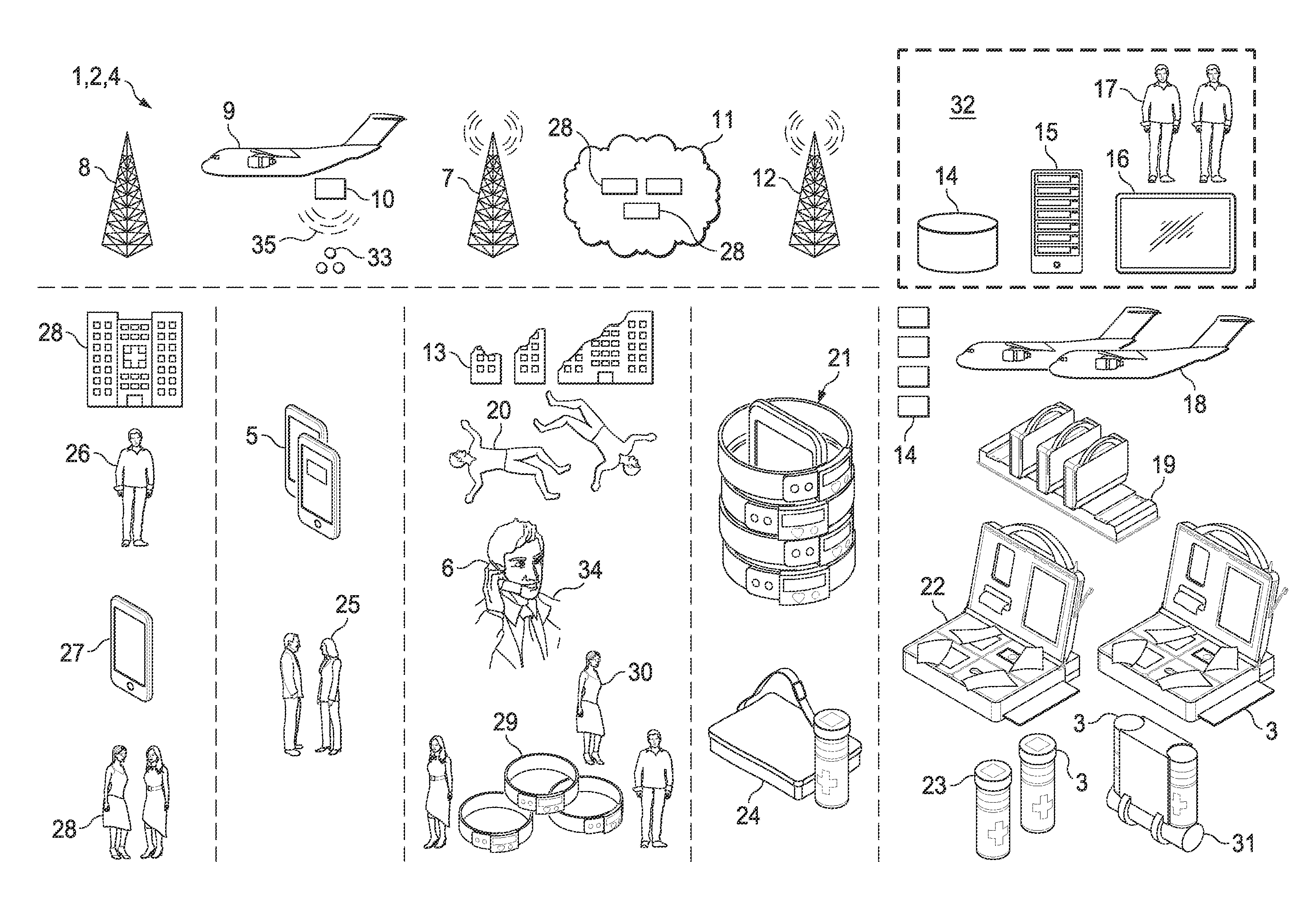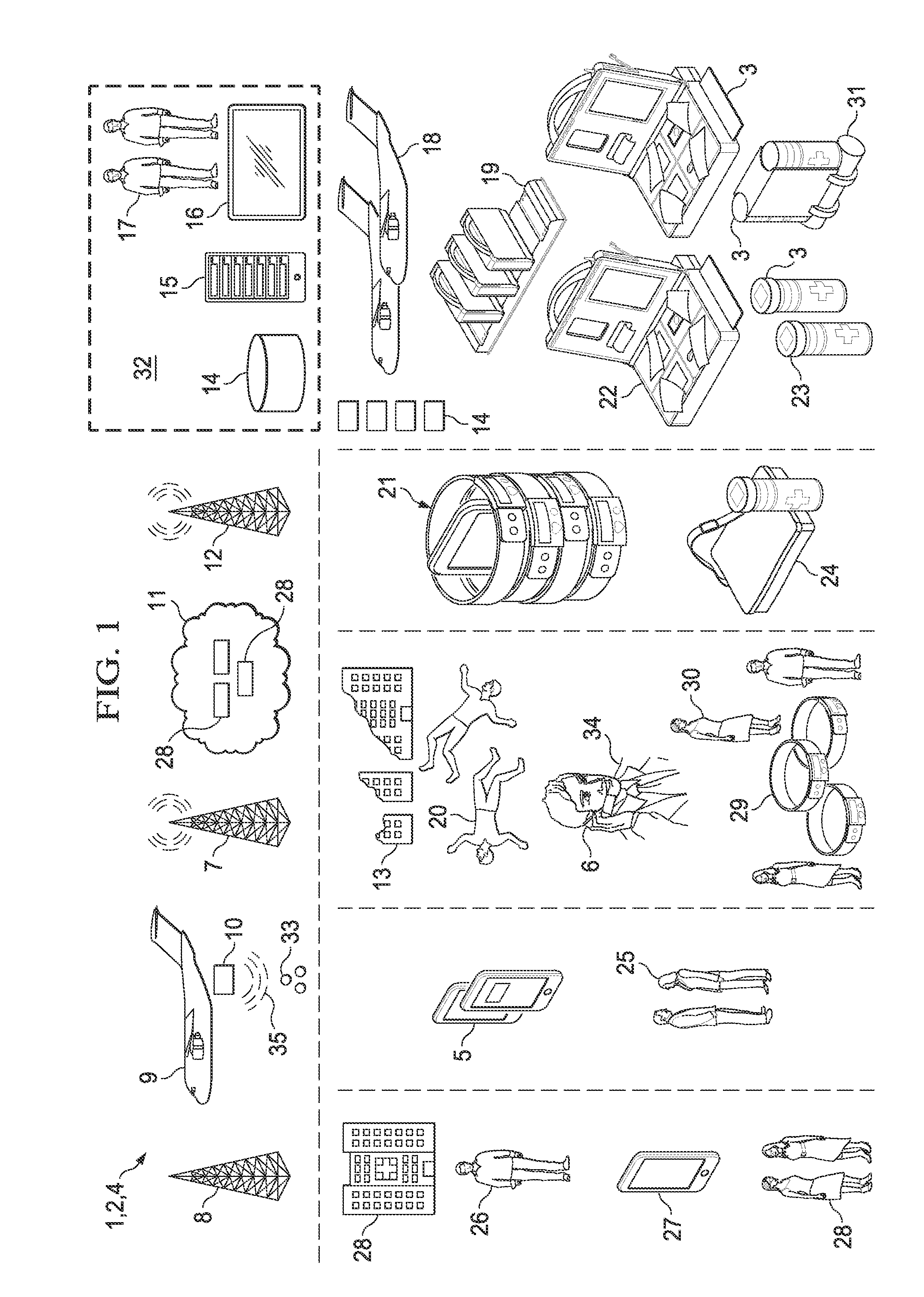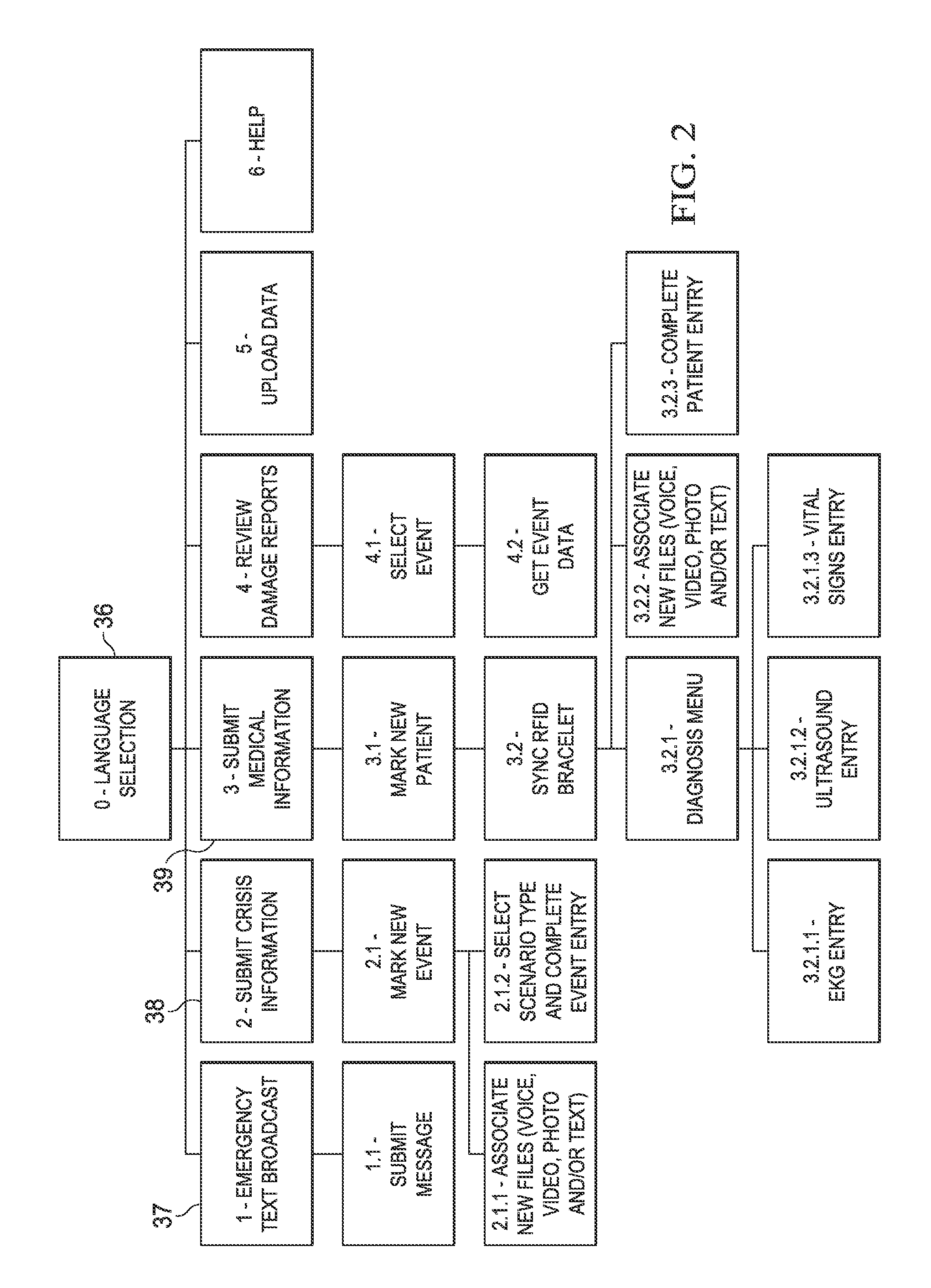Systems, Methods and Devices for the Rapid Assessment and Deployment of Appropriate Modular Aid Solutions in Response to Disasters
a technology of disaster response and modular aid, applied in the field of systems, devices and methods for disaster response, can solve the problems of increasing the complexity of the response phase in terms of search, significant threats to mankind, and mortality, and achieve the effect of improving the search efficiency and reducing the search difficulty
- Summary
- Abstract
- Description
- Claims
- Application Information
AI Technical Summary
Benefits of technology
Problems solved by technology
Method used
Image
Examples
Embodiment Construction
[0027]In a preferred embodiment said CME may comprise a communication infrastructure such as a sensor network or cellular phone network, consisting of a plurality of sensor, wearable units or client phone devices, wireless radio communication means, back-end server and data infrastructure, and management and advice tools. Where said network and infrastructure is capable of wireless data exchange with sensor devices or wearable units, or transmitting compact ‘text’ SMS messages (Short message service e.g. up to 160 7-bit characters), voice or other data services to / from end client phone devices, in normal operation, or is capable of basic data transmission and exchange in reduced operation, or is capable of real-time or delayed transmission of compact priority messages when infrastructure is down or re-established during a disaster by means of a modular solution aid (MAS) communications mast, transponder or repeater, deployed to the scene via a deployment system (DS).
[0028]Said CME a...
PUM
 Login to View More
Login to View More Abstract
Description
Claims
Application Information
 Login to View More
Login to View More - R&D
- Intellectual Property
- Life Sciences
- Materials
- Tech Scout
- Unparalleled Data Quality
- Higher Quality Content
- 60% Fewer Hallucinations
Browse by: Latest US Patents, China's latest patents, Technical Efficacy Thesaurus, Application Domain, Technology Topic, Popular Technical Reports.
© 2025 PatSnap. All rights reserved.Legal|Privacy policy|Modern Slavery Act Transparency Statement|Sitemap|About US| Contact US: help@patsnap.com



